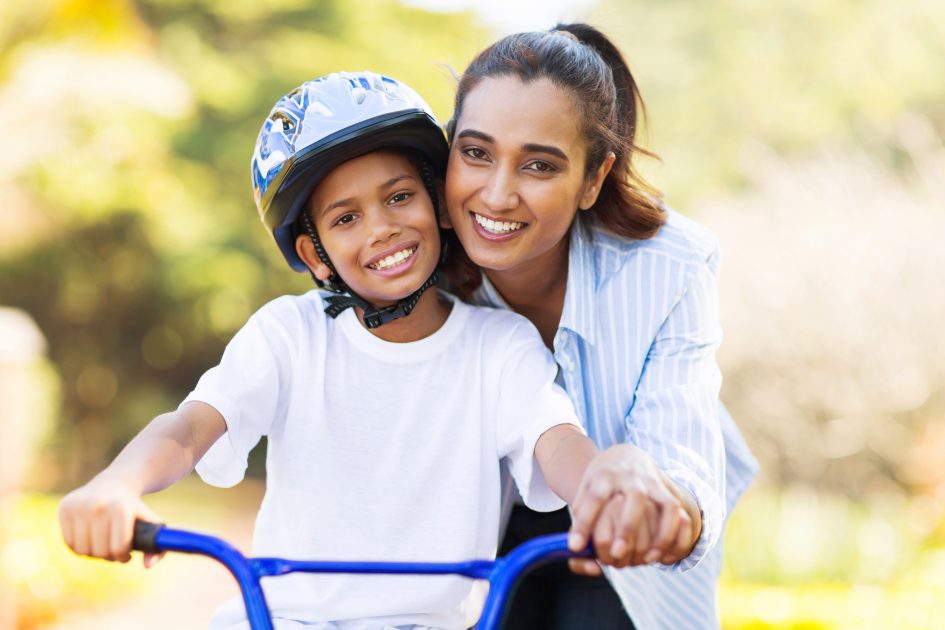Summer means good times under the sun and making memories with family and friends. While enjoying traditional summertime activities, however, it’s important to keep in mind certain safety measures. For example, two-thirds of drowning deaths occur in the summer, between May and August, and most commonly on weekends. Therefore, special precautions are required while kids are swimming. Follow the summer safety tips below to ensure you and your family have a safe and fun summer.
Practice water safety: Even if they are good swimmers, children need to be watched closely anytime they’re in or around water. Small children can drown in as little as one inch of water, so they need adult supervision around pools, lakes, oceans and wading pools. If you own a pool, make sure it has a fence with a gate that locks and an alarm. Children should wear a life jacket at all times when on boats, docks or near bodies of water. Adults should wear life jackets for their own protection and to set a good example. The jacket should not be loose and should always be worn as instructed with all straps buckled. Teach your child how to swim. The American Academy of Pediatrics recommends that children begin swimming lessons at 4 years old.
Prevent bug bites: Scented soaps, perfumes and hair sprays can attract biting bugs. Avoid areas where insects nest or gather, such as pools of still water, uncovered foods, and gardens where flowers are in bloom. Using a bug spray with DEET is considered the best defense for biting insects. One application can last three to eight hours, depending on how much DEET is in the product. Pediatricians recommend 10 to 30 percent DEET for children older than 2 months. If you are looking for a product without DEET, trying using essential oils, such as citronella, lemongrass, cedar and eucalyptus. You can also plant certain herbs to deter bugs. Check out our article here.
Practice playground safety: Take a good look at the equipment. Rotted or worn out wood and plastic can have sharp edges that could cause scrapes or eye injuries. Beware of hardware that is capable of impaling or cutting a child (e.g., bolts, hooks, rungs, etc.). Make sure all surfaces are cool enough to be comfortable. Even today’s newer materials can cause burns when they’ve been in the sun for too long. Dress kids in safe play clothes. Scarves, hood drawstrings, necklaces and other dangling accessories can get caught on play equipment.
Beat the heat: Heat-related deaths and illnesses are preventable. Despite this fact, more than 600 people in the U.S. are killed by extreme heat every year. Older adults, the very young, and people with mental illnesses and chronic diseases are at highest risk. Always take kids and pets out of the car any time you make a stop. Increase your fluid intake, regardless of your activity level. During heavy exercise in a hot environment, drink two to four glasses of cool fluids each hour.
Practice sun safety: Skin cancer is the most commonly diagnosed cancer in the U.S. and one of the most preventable. The sun’s rays are strongest from 10 a.m. to 4 p.m., so it is important to limit sun exposure during these times to prevent sunburn and overheating. Experts recommend choosing a broad-spectrum sunscreen of SPF 15 or higher. Apply to your skin about 30 minutes before activity. Reapply sunscreen every two hours or after swimming/excessive sweating.
Remember helmets and kneepads: It is estimated that 80 million Americans ride bikes. To participate in safe and enjoyable bicycling, cyclists of all ages should wear helmets. According to Safe Kids, bicycle helmets reduce the risk of head injury by as much as 85 percent. For in-line skaters and skateboarders, wearing kneepads (along with a helmet) can protect from scrapes and hot metal surfaces.
Have a safe, fun and active summer!
http://www.thinkdontsink.org/water-safety-resources/drowning-facts-and-statistics-in-the-usa/
https://www.verywellfamily.com/swim-lessons-for-kids-2632446

